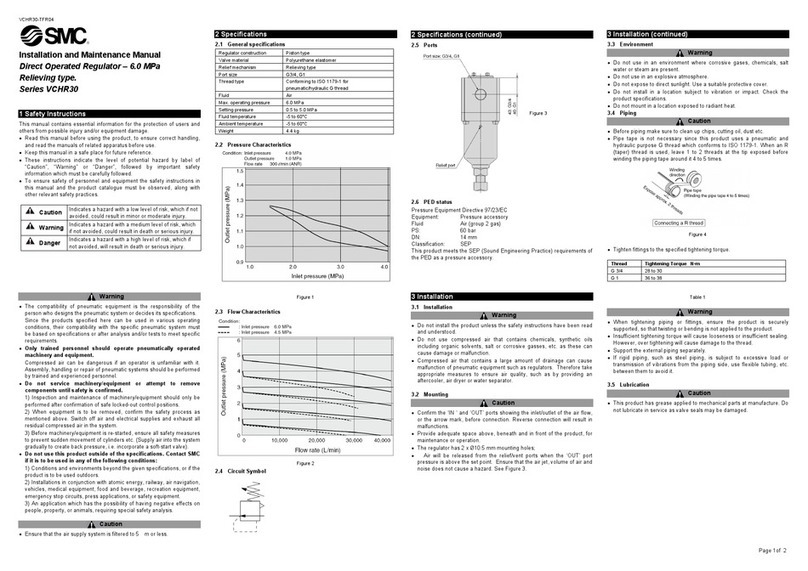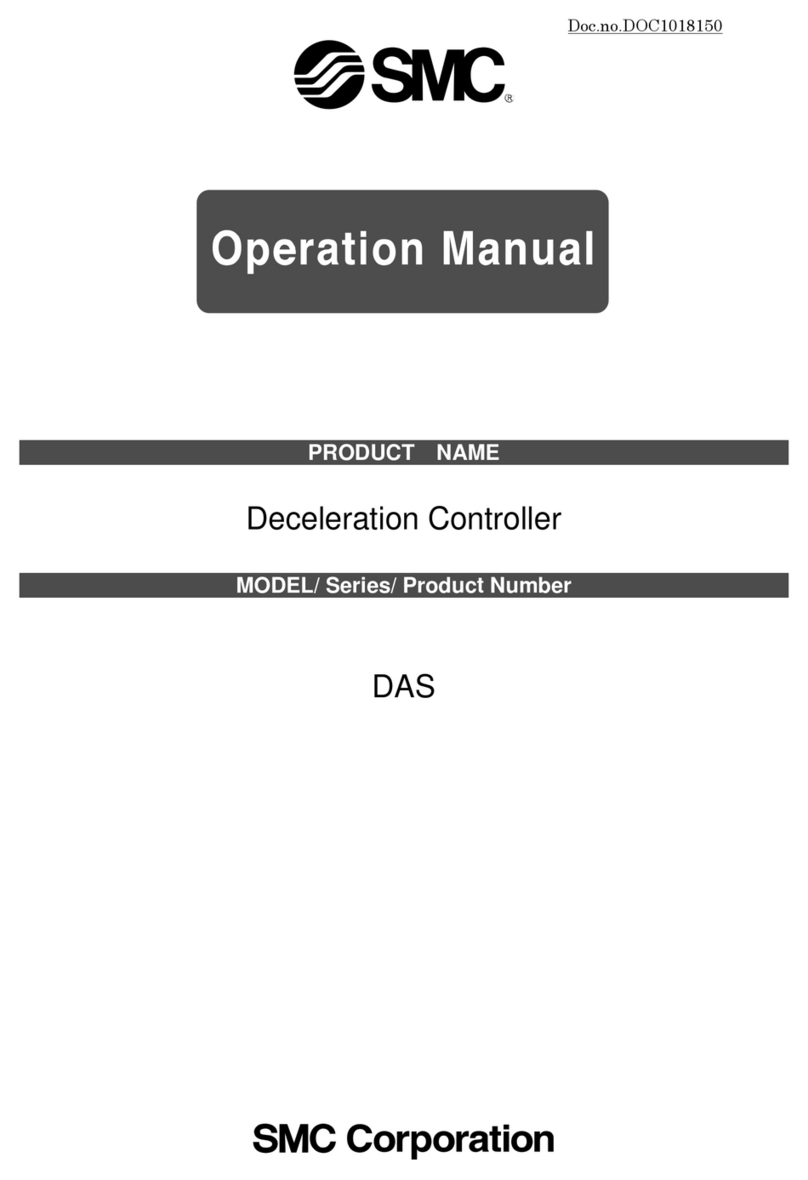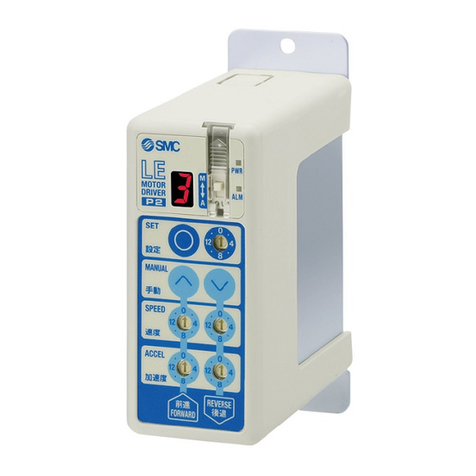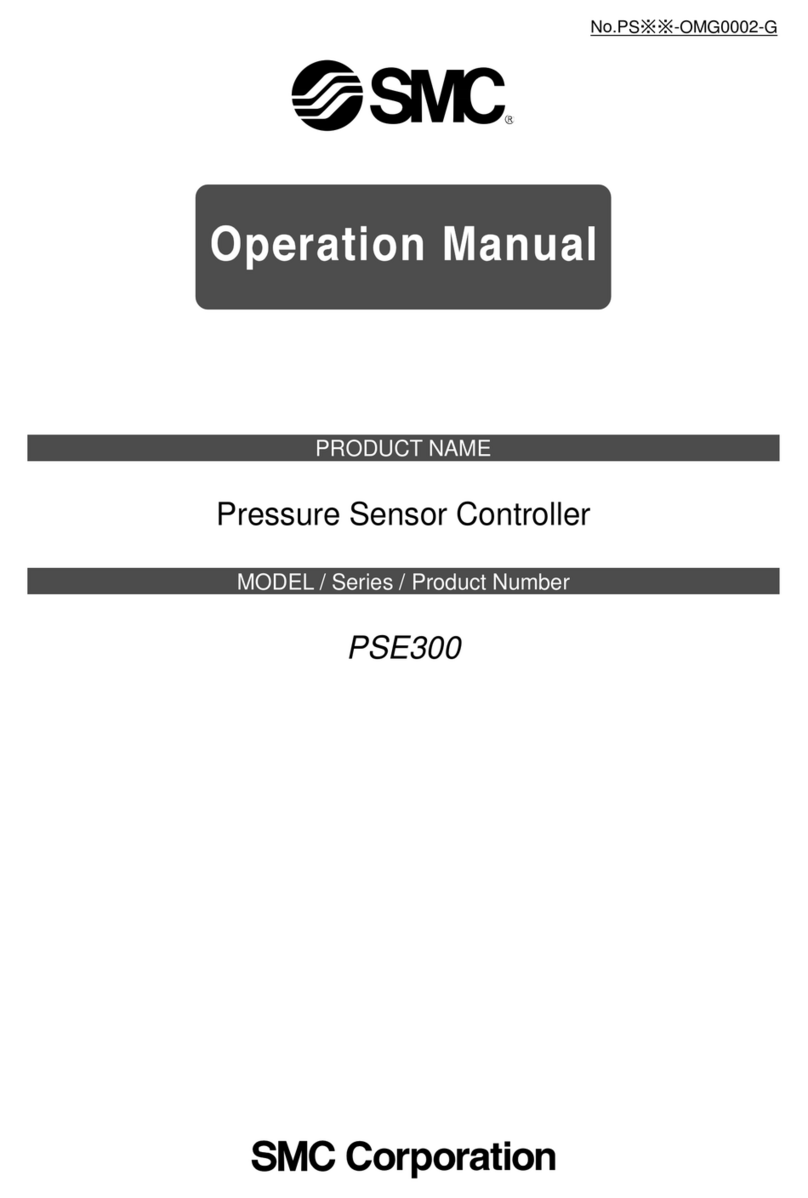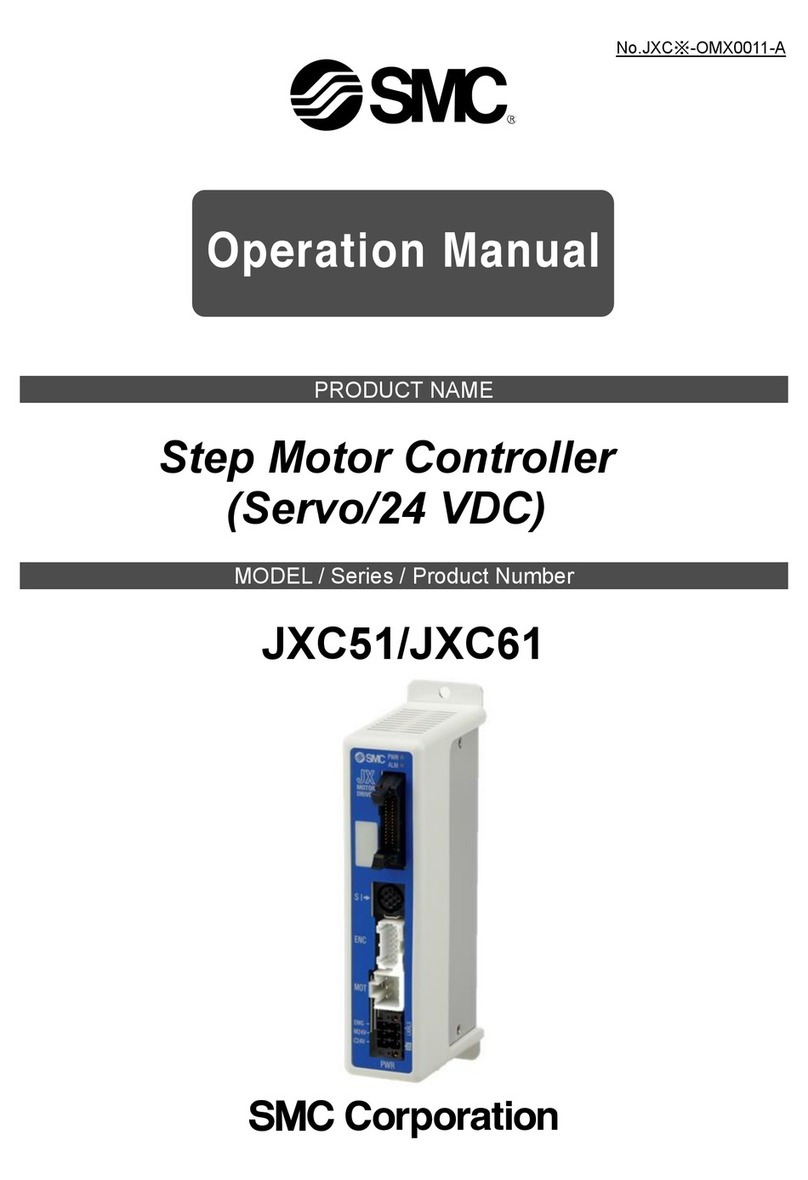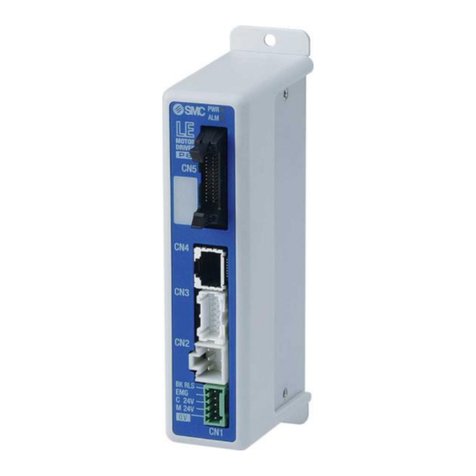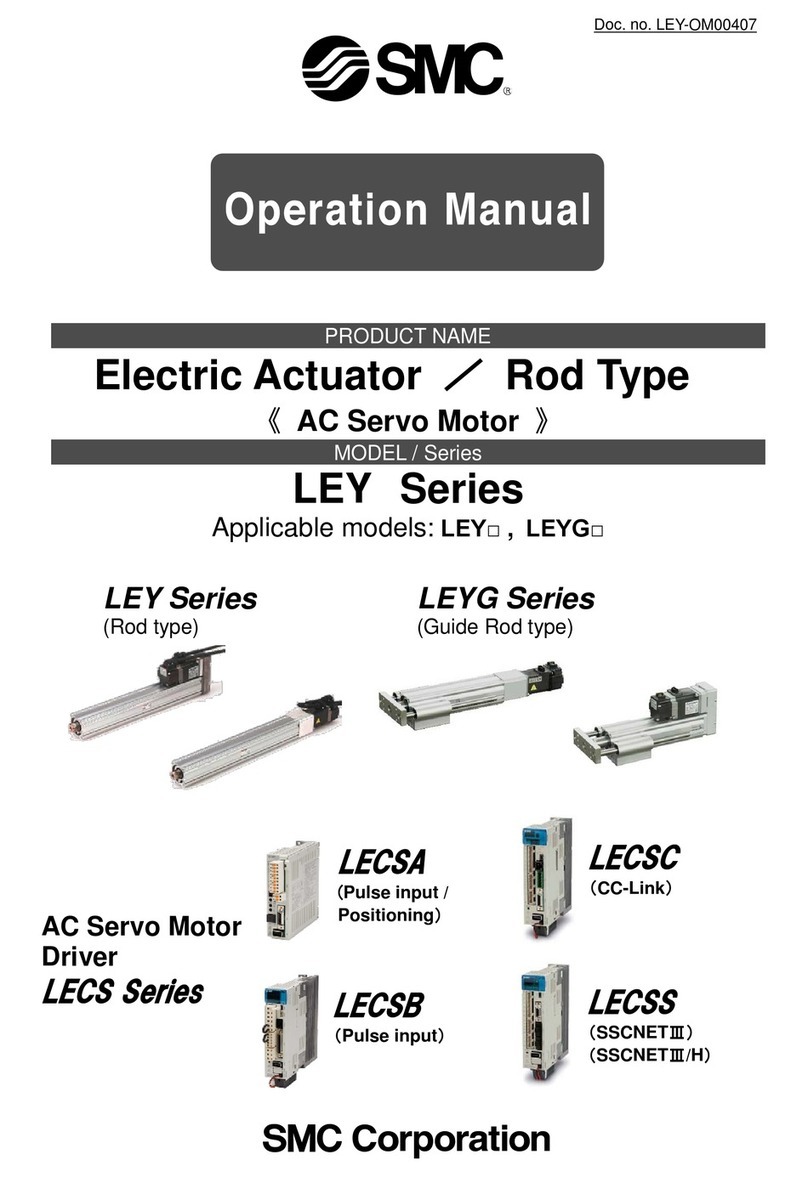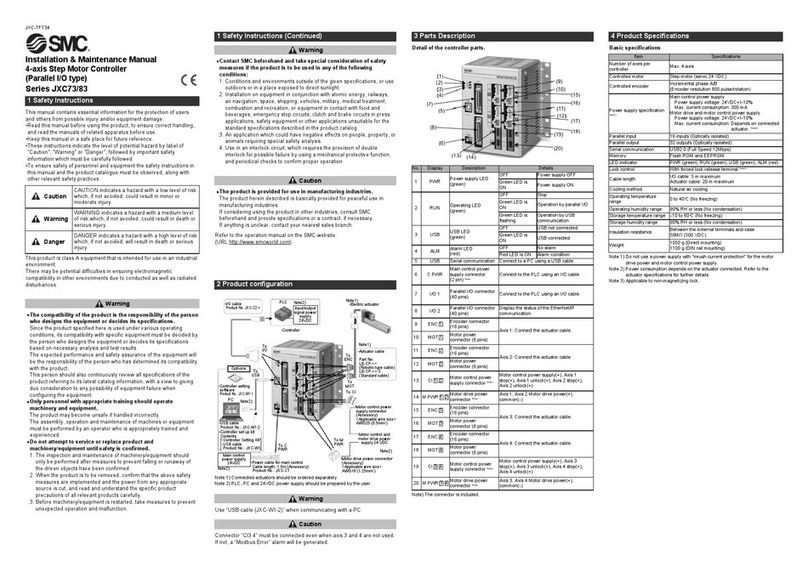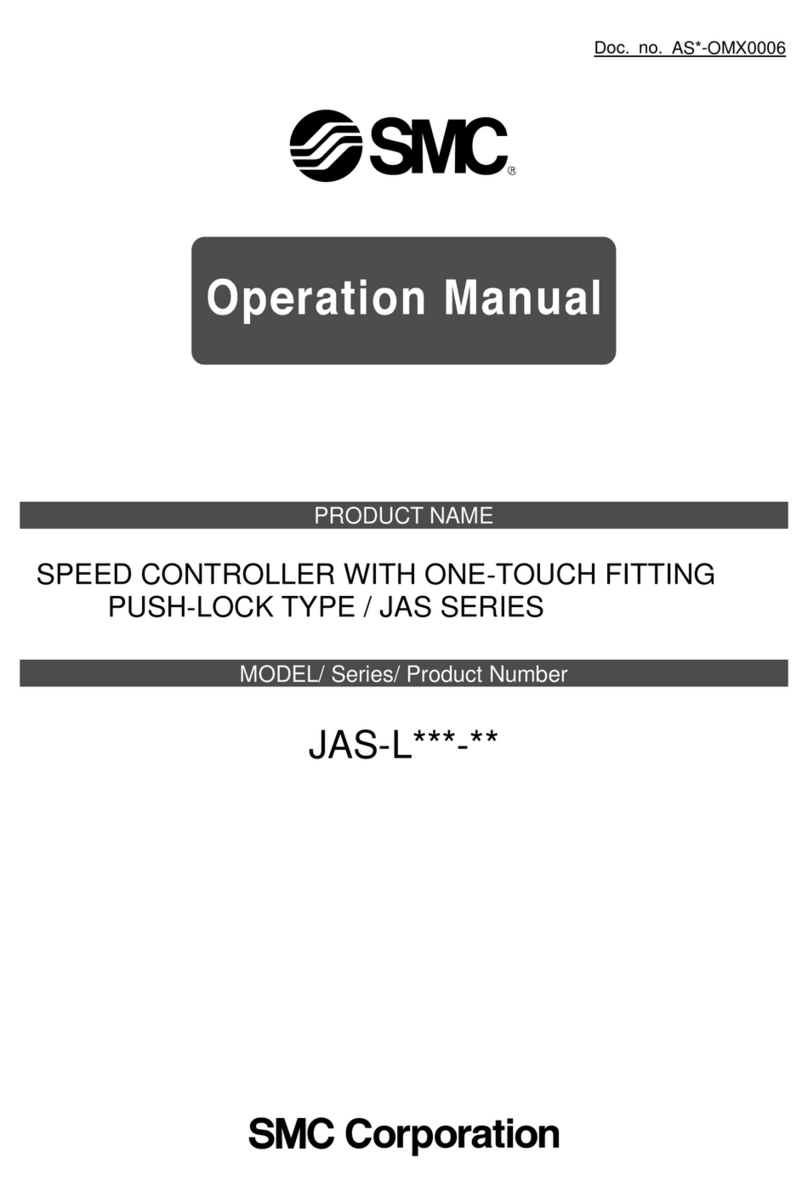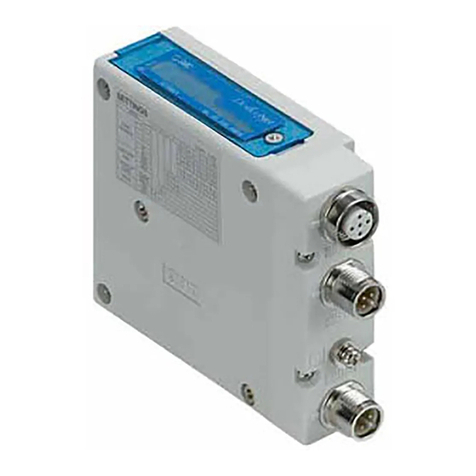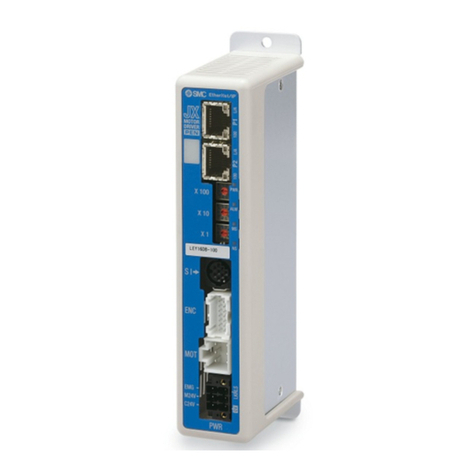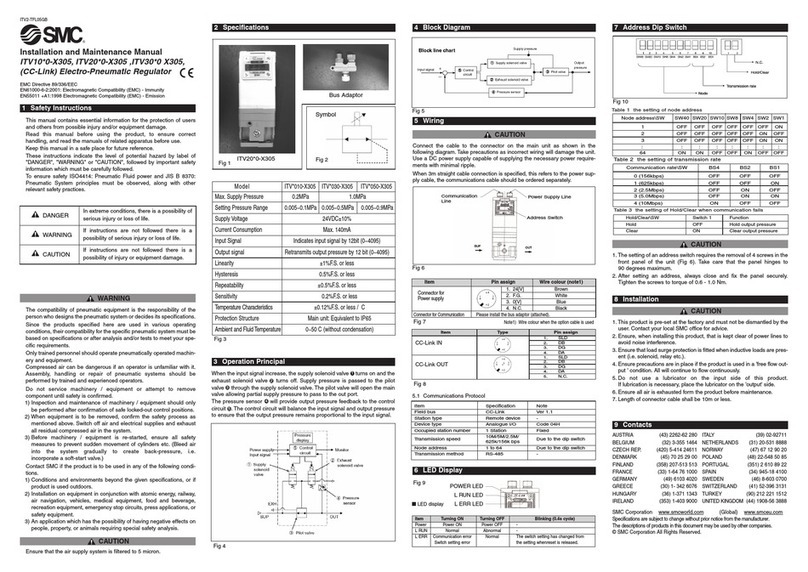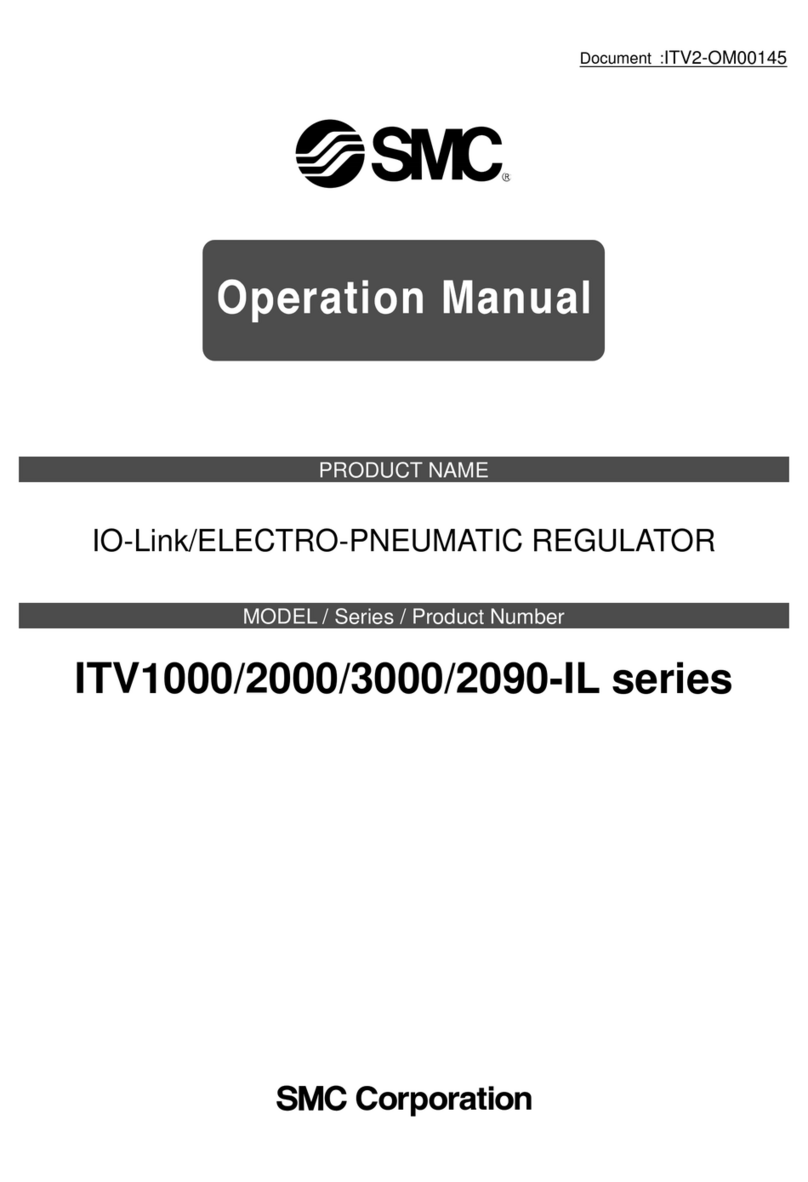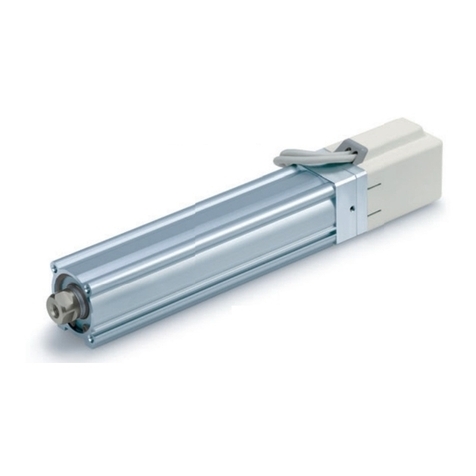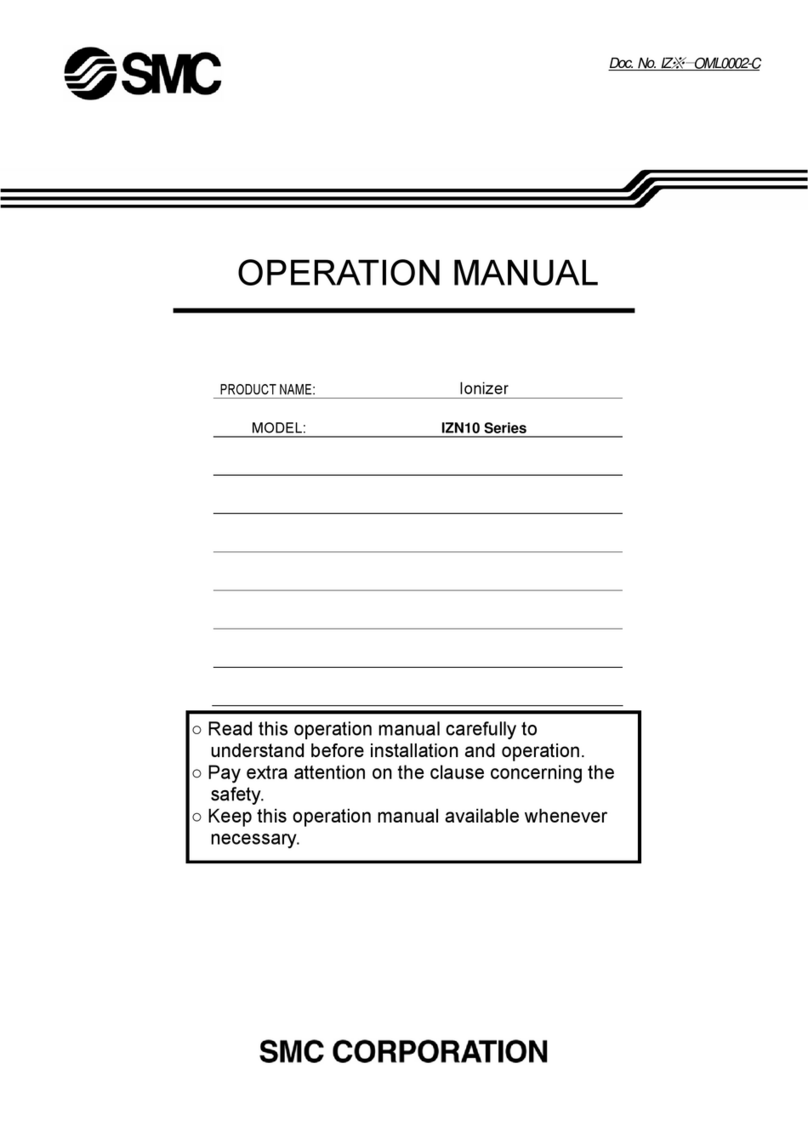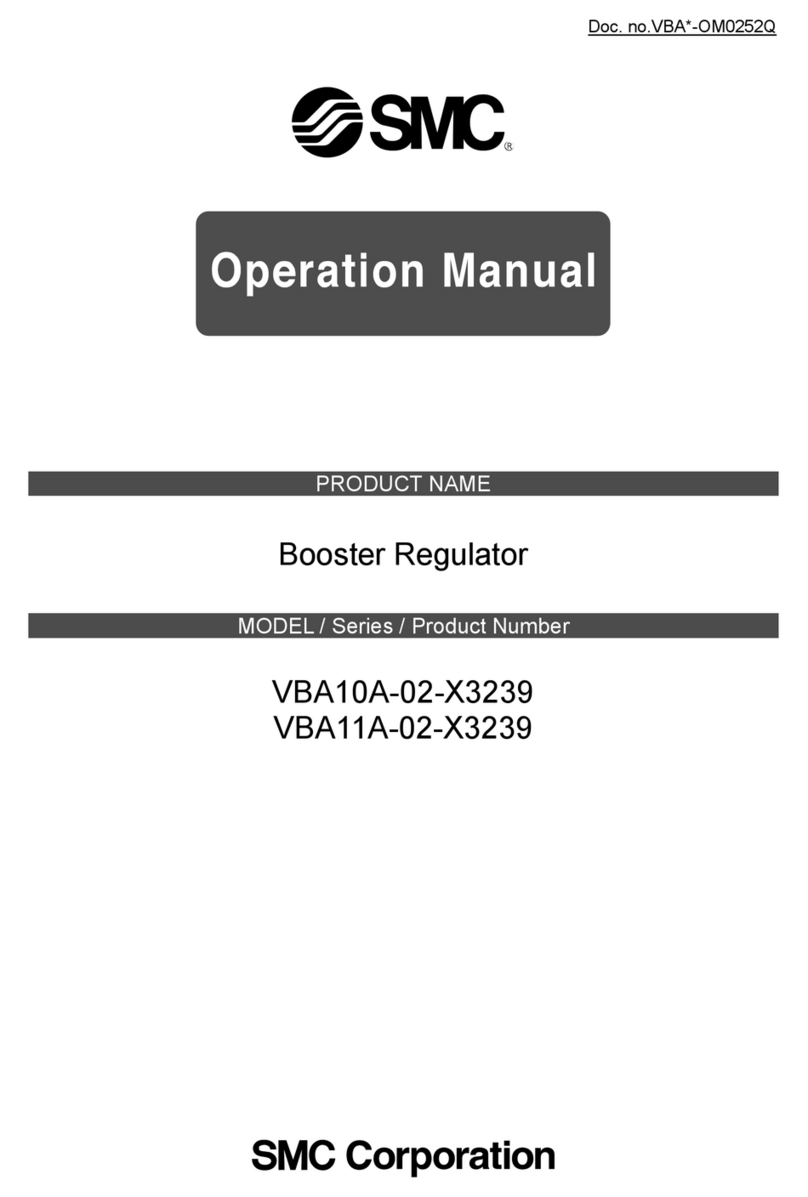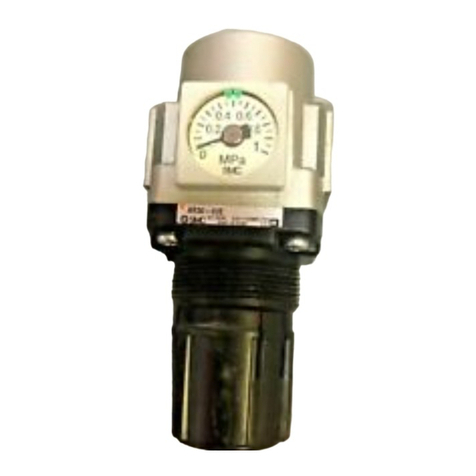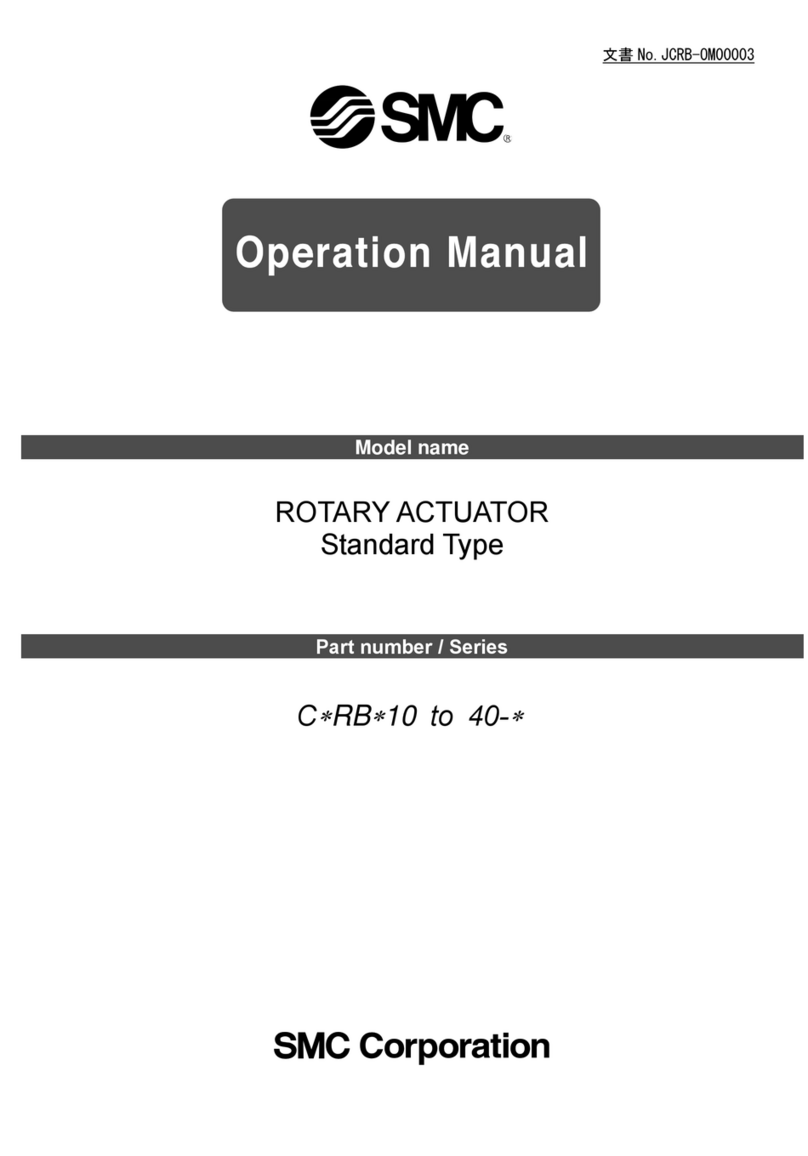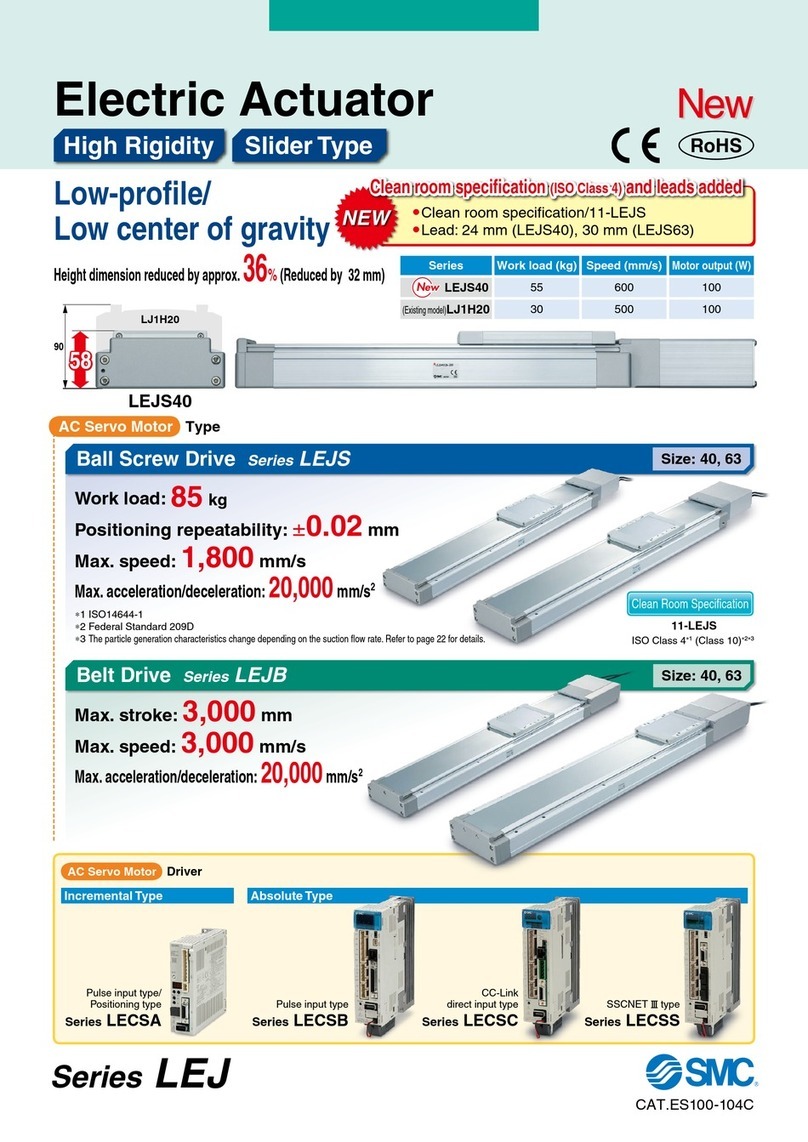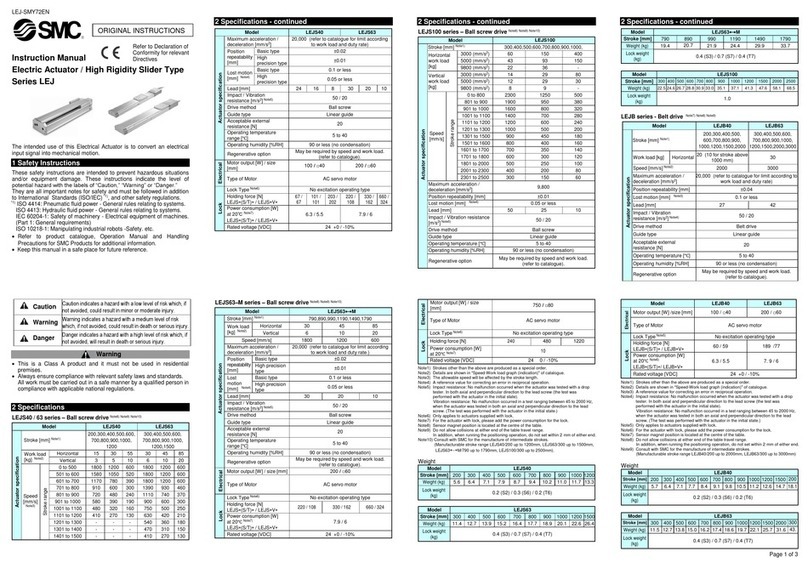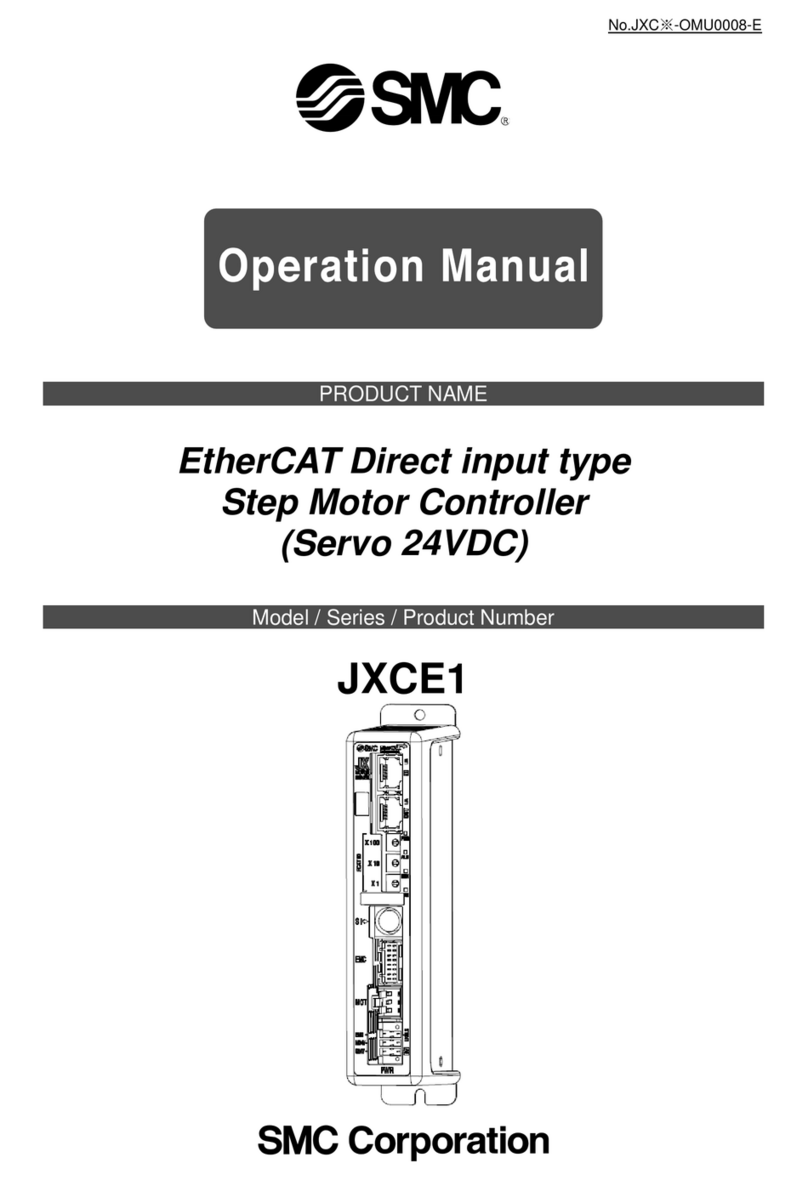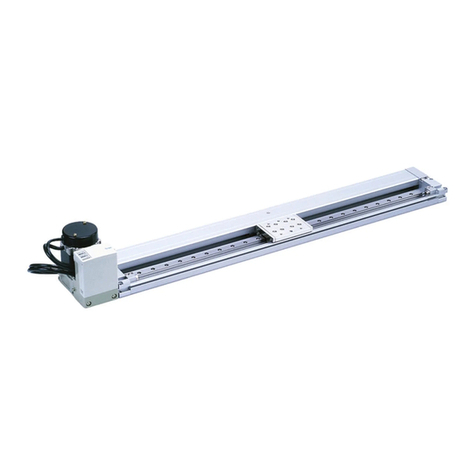
- 9 -
2. Rod type / LEY Series
2.1 Specification
(1) Step motor (servo 24VDC)
Model LEY 16 LEY 25 LEY 32
Stroke [mm] Note1)
30, 50, 100, 150, 200, 250, 300 30, 50, 100, 150, 200, 250, 300,
350, 400
30, 50, 100, 150, 200, 250, 300,
350, 400, 450, 500
(3000[mm
2
/s])
4 11 20 12 30 30 20 40 40
Horizontal
(2000[mm
2
/s])
6 17 30 18 50 50 30 60 60
Work load
[kg] note 2) Vertical
(3000[mm
2
/s])
2 4 8 8 16 30 11 22 43
Pushing force [N] Note3)4) 14 to 38 27 to 74 51 to 141 63 to 122 126 to 238 232 to 452 80 to 189 156 to 370 296 to 707
Speed [mm/s] 15 to 500 8 to 250 4 to 125 18 to 500 9 to 250 5 to 125 24 to 500 12 to 250 6 to 125
acceleration/deceleration 3,000 or less
Pushing speed [mm/s] Note5) 50 or less 35 or less 30 or less
Positioning repeatability [mm] +/- 0.02
Lead [mm] 10 5 2.5 12 6 3 16 8 4
Impact resistance/vibration
Resistance [m/s2]Note6) 50 / 20
Drive method Ball screw and Belt (For “LEY*_ / R / L ”)
Ball screw (For “LEY*D)
Guide type Sliding bush(Piston rod part)
Operating temperature range [
℃
]
5 to 40
Actuator specification
Operating humidity range [%]
90 RH or less(No condensation)
Motor size □28 □42 □56.4
Type of Motor Step motor (Servo 24VDC)
Encoder Incremental A/B phase (800 pulse/rotation)
Rated voltage [VDC]
24 +/- 10%
Power consumption [W] Note7) 23 40 50
Standby power consumption
when operating [W] Note8) 16 15 48
Moment max. power
Consumption [W] Note9)
43 48 104
Electric specification
Controller weight [kg] 0.15 (Screw mounting type), 0.17(DIN rail mounting type)
Type Note10) No excitation operating type
Holding force [N] 20 39 78 78 157 294 108 216 421
Power consumption [W] Note11) 3.6 5 5
Lock specification
Rated voltage [VDC] 24+/-10%
Model LEY 16 [ _ / R / L ] LEY 25 [ _ / R / L ] LEY 32 [ _ / R / L ]
Stroke [mm] Note1)
30 50 100 150 200 250 300 30 50 100 150 200 250 300 350 400 30 50 100 150 200 250 300 350 400 450 500
Weight [kg] 0.58 0.62 0.73 0.87 0.98 1.09 1.20 1.18 1.25 1.42 1.68 1.86 2.03 2.21 2.38 2.56 2.09 2.20 2.49 2.77 3.17 3.46 3.74 4.03 4.32 4.60 4.89
Model LEY 16 D LEY 25 D LEY 32 D
Stroke [mm] Note1)
30 50 100 150 200 250 300 30 50 100 150 200 250 300 350 400 30 50 100 150 200 250 300 350 400 450 500
Weight [kg] 0.58 0.62 0.73 0.87 0.98 1.09 1.20 1.17 1.24 1.41 1.67 1.85 2.02 2.20 2.38 2.55 2.08 2.19 2.48 2.76 3.16 3.45 3.73 4.02 4.31 4.59 4.88
Additional weight
for lock [kg] 0.12 0.26 0.53
Note 1) The middle stroke other than the above are produced upon receipt of order.
Note 2) Horizontal: The maximum value of the workload for the positioning operation. For the pushing operation the maximum workload is
equal to the "Vertical workload"An external guide is necessary to support the workload. The actual workload and transfer
speed will depend on the type of external guide.
Vertical: The speed is dependent on the workload.Check the catalog data for the selected model.
The figures shown in ( ) are the maximum acceleration/deceleration values.Set these values to be 3000mm/s² or less.
Note 3) The accuracy of the pushing force is ±20% of the max. pushing force.
Note 4) The setting range for the "Pushing force" is from 35% to 85% (LEY25 is upper bound 65%).
For details of setting range and notes, refer 7.2 "INP output signal" p.41.
It is possible that the "Pushing force" and the "Duty ratio" will change dependent on the set value.
Note 5) "Pushing speed” is the allowable speed for the pushing operation.
Note 6) Impact resistance:
No malfunction occurred when the actuator was tested with a drop tester in both an axial direction and perpendicular
direction to the lead screw.
(The test was performed with the actuator in the initial state.)
Vibration resistance:
No malfunction occurred in a test ranging between 45 to 2000 Hz, when the actuator was tested in both an axial
direction and a perpendicular direction to the lead screw.
(The test was performed with the actuator in the initial state.)
Note 7) The “Power consumption” (including the controller) is for when the actuator is operating.
Note 8) The “Standby power consumption when operating” (including the controller) is for when the actuator is stopped in the set
position during the operation, except during the pushing operation.
Note 9) The “Momentary max.power consumption” (including the controller) is for when the actuator is operating.
This value can be used for the selection of the power supply.
Note 10) With lock oniy.
Note 11) For an actuator with lock, add the power consumption for the lock.
